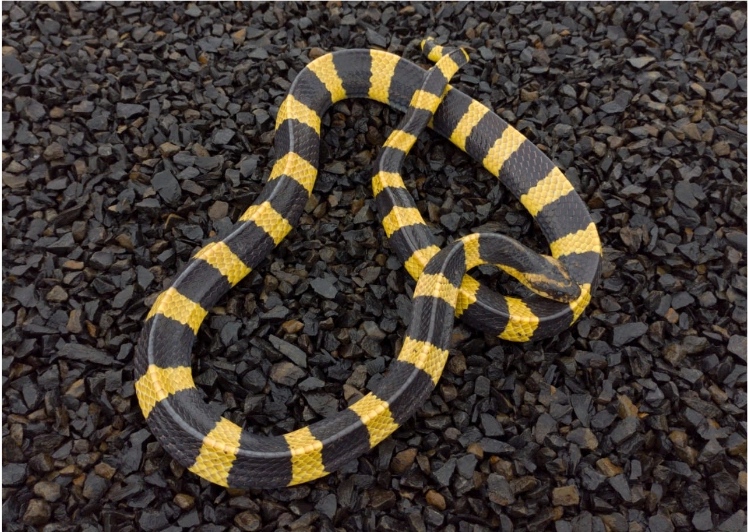Snakebites: An Unheard Public Health Crisis

Snakes, the limbless lazy creature, often love to do three things, hiding out; sunning themselves and drinking water are recently being notoriously infamous for killing more people other than big natural calamity like sever cyclonic storm, tsunami or flash flood.
Snake bites are no more treated as independent events having consequences for the victim’s family alone, rather it is pounding on the whole economy by proving lethal for thousands of individuals in their productive age group and converting many of them to permanent disability.
Snake bite hazard is impacting largely on the “productive human resource” and India is receiving the highest number of snake bite causality, on an average of 50,000 deaths annually.
In this regard the state of Odisha, declared snake bite as state specific disaster in the year 2015 to highlight on issue of potential threat from this reptile animal.
Odisha has been pioneer in disaster response and in this respect the state has made its intent very clear by declaring snakebites as state specific disaster.
The compensations are earmarked for the families in case of deaths and disabilities. However, it is equally important to get prepared that way states have disaster risk reduction plans for cyclone, floods and many such natural disasters.
It is important that we make people aware about the behaviour and character of snakes to help the communities to protect themselves from the potential risk of snakebites.
The ophidians, equalized with traitors, cheat, fraudster and a great deal of such negative connotation possess many physical and sensory disabilities that we as human need to understand in order to reduce snake bite disaster events.
These cold-blooded reptiles’s natural trait is to hide under cover for multiple biological reasons. One of the causes of snake brumation is that they being in the middle order food chain are the predators and prey as well.
Unless there is dire need of food, water or sunshine they don’t show up on the ground. Rodent, frog, eggs, lizards and other minor animals like small snakes are the natural prey of snakes that they love to ambush.
Big snakes, non venomous python, target bigger prey like humans, cattle and buffalos but in general the average snakes don’t want to show up before humans because of their size. They always try to hide and avoid confrontation with the human beings.
Snakes are less frequent eater because of their poor digestion system. These animals also have poor eyesight and different auditory sensory that dictate low frequency sound through generation of vibration. The navigators during their venturing out from their hideout are their skin and forked tongue.
The flicking forked tongue gathers the chemicals from air and send it to the floor of the mouth that transfer the chemical molecules to the Jacobson’s organ to dictate the smell.
The smell sensory of the snakes are highly developed to dictate the direction and position of the prey but their poor vision is a hindrance in this regard. While making a move towards their food or water and they get stepped up by any animal as a reflex action they bite.
“Snakebite Mortality in India: A Nationally Representative Mortality Survey” first ever direct estimation of snake bite death in the period of 2001-2003, brought to light some startling fact that changed the perspective of international agencies’ regarding snake bite causalities.
It reported, India is facing annually on an average 45,900 deaths due to snake bites, that the world agencies were apprehending happening at the global level. Prior to the study conducted in India, snake bite was never made mandatory reporting hence the issue remained unreported in most part of the world.
In the year 2009, World Health Organisation declared snake bite as neglected tropical disease. As per WHO report, 5.4million people worldwide receives snake bite annually out of which 2.7million are envenoming.
People within a range of 81,000-138,000, are succumbing to snake venom while the remaining people are suffering with permanent disability, amputation of body parts or other morbidity issues.
Another study, “Trends in snakebite deaths in India from 2000 to 2019 in a nationally representative mortality study”, reveals that 1.2million people died in the country due to snake bite within the period of 20 years and nearly half of the population belonged to the age of 30-69 years and a quarter belong to the child age group.
Most of these envenoming happened in the rural areas and mostly in the rainy season, as per the report. All these startling facts and figures may be treated as a pointer towards bigger problems that the world is currently undergoing, the “Sixth Mass Extinction Phase” as per the World Wildlife Fund. Besides, the climate change is often resulting in big disastrous events; are also impacting on the availability of food for the snakes and forces them to travel long distance.
The slothful, indolent creature who loves to hide and sleep only gets aroused to take travel for food & water is generating a wave of epidemics around the world is definitely a bigger problem. The change in land use pattern, improper waste management, use of chemicals to kill the rodents and other smaller animals are some of the reasons behind increased confrontation of human and snakes.
Along with the spread of awareness campaign related to snake bites, it is also important to ensure the food supply base for the snakes because it is too early to predict the consequences for the humans in the absence of middle order food chain that is ‘snake’ in the long run. In this context, it is important to spread awareness about snakes and snakebites to create a public discourse to catch the attention of the policy makers for policy solutions.













































